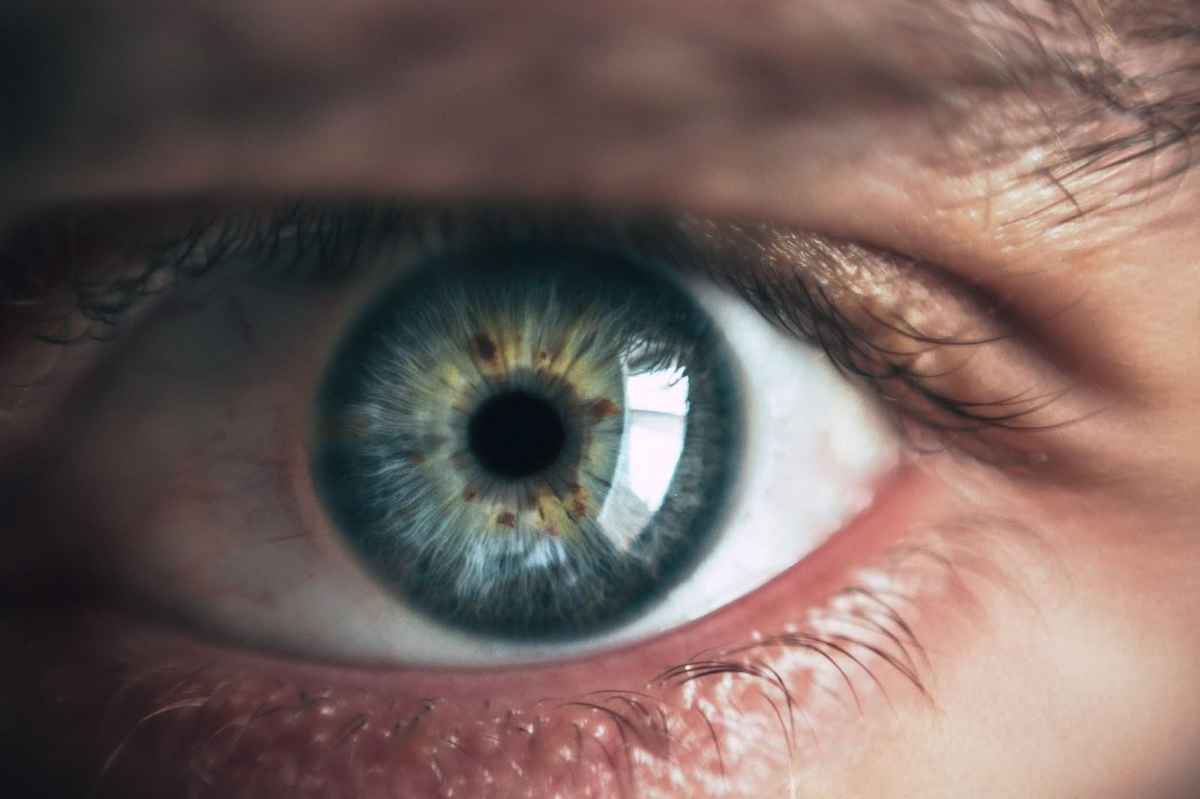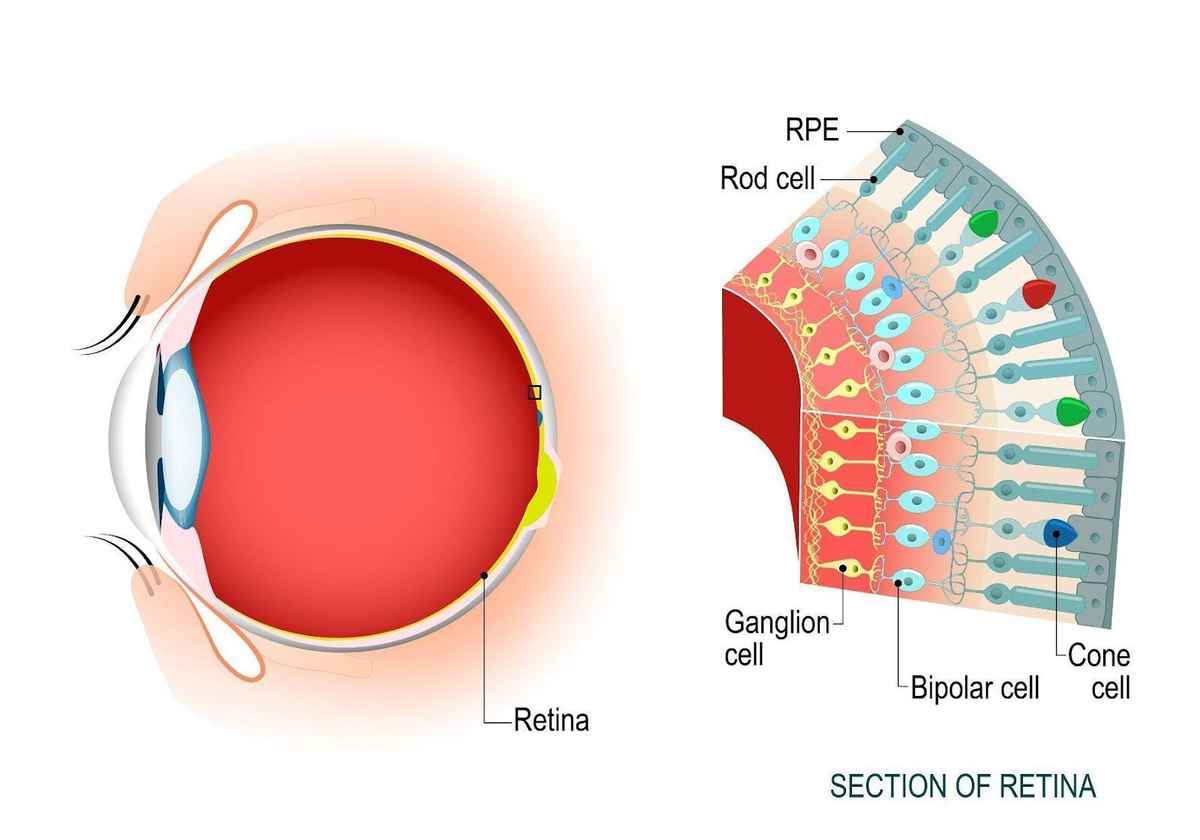Rods & Cones in The Human Eye
Stunning visual experiences are made possible by tiny structures called rods and cones in our eyes.
These marvelous structures allow you to gaze at a colorful sunset and be amazed by the vivid hues on display.
In this easy beginner’s guide, we’ll take a closer look at rods and cones in the eye, explaining what they are, how they work, and why they are crucial for our ability to see.
What, exactly, is the eye?
Before we dive into the details of rods and cones, let’s briefly examine the eye’s basic structure and the retina’s anatomy.
After all – the eye is a complex organ that works with the brain to give us a sense of sight.
It comprises several parts, including the cornea, lens, iris, and retina.
A delicate tissue lining called the retina is at the back of our eye. It contains millions of specialized cells – the photoreceptors – that detect light and send signals to the brain.
Rods and cones are the two types of photoreceptors found in the retina:
- Rods are highly sensitive to low light levels.
- Cones are responsible for our ability to see colors and detail in brighter light conditions.
Rods in the eye help us see in low light
The distribution of rods in the retina is not uniform, with the highest concentration located on the outer edges of the retina.
This concentration lets us detect motion and changes in our peripheral vision and see objects in low-light conditions.
Rods have unique features that help them do their job well. They contain a pigment called rhodopsin that is very sensitive to light. The result is that rods can detect even tiny amounts of light.
They also have a high degree of convergence, meaning that multiple rods will often converge onto a single bipolar cell in the retina.
The intersection allows us to detect even small amounts of light and motion, despite the low sensitivity of each rod.
Cones in the eye help us see fine detail
Cones are another specialized cell in the eye’s retina that plays a critical role in our ability to see fine detail and color.
These cells are responsible for our ability to distinguish between different colors and perceive detail in bright light conditions.
Unlike rods, cones are less susceptible to light but more sensitive to different colors, providing us with high-resolution vision.
This type of cell concentrates in the retina’s center, in an area known as the macula.
This concentration allows us to see fine detail and colors with high resolution in our central vision.
Outside of the macula, the density of cones decreases, and the sensitivity to color and fine detail decreases as well.
Cones have several unique characteristics that make them well-suited to their function.
They are sensitive to different colors because they contain other pigments that react to varying wavelengths of light. That’s how we can see different colors.
So, what’s the difference between rods and cones
While rods and cones are essential cells in the retina that contribute to our ability to see, they have several key differences in structure, function, and distribution.
One of the main structural differences between rods and cones is their shape.
Rods are long and thin, with a cylindrical shape that allows them to detect even small amounts of light.
Conversely, cones are shorter and broader, with a cone-like shape enabling them to see color and fine detail.
Both types of cells are distributed differently in the retina.
Rods are mainly in the outer edges of the retina, while cones are most concentrated in the center, providing high-resolution vision.
But – rods and cones aren’t always perfect
Several eye conditions can affect the function of rods and cones and lead to vision problems.
Retinitis pigmentosa is one example of a genetic disorder that affects the operation of the rods in the retina.
It can cause night blindness and loss of peripheral vision.
Cone dystrophy is another genetic disorder that affects the part of the cones and leads to problems with color vision and fine detail.
Abnormalities in the cones of the retina often cause color blindness.
Cones in the eye are responsible for detecting color.
The human eye has three types of cones that respond to different light colors: red, green, and blue.
When someone is color blind, one or more of these cone types are missing or not functioning correctly, leading to difficulty distinguishing between specific colors.
Other eye conditions, such as macular degeneration, can also affect the function of rods and cones and lead to vision problems.
These conditions can cause a loss of vision in the center of the visual field, making it hard to do everyday activities like reading, driving, and recognizing faces.
Wearing polarized glasses can help improve vision by reducing glare and enhancing contrast.
This makes it easier for rods and cones in the eye to function better.
Polarized glasses reduce the amount of stray light that enters the eye, which improves contrast and helps rods detect objects in low-light conditions.
They also reduce the amount of light reflected off surfaces like water, snow, or pavement, which enhances color perception and makes it easier for cones to distinguish between colors and details in the visual scene.
However, it is essential to note that polarized glasses may not suit all individuals or situations.
It is always best to consult an eye care professional before using any vision correction or enhancement device.
In a nutshell – rods and cones play an important role!
Rods help us see in low-light environments and detect motion, while cones allow us to see fine detail and distinguish colors.
Understanding how these cells work can help us appreciate the incredible complexity of the human visual system.
Together, these cells allow us to experience a rich and detailed visual world.
However, several eye conditions can affect the function of rods and cones and lead to vision problems.
Protecting our vision ensures we enjoy the world in all its dazzling perfection.
Ensure you get regular eye exams, live a healthy lifestyle, and protect your eyes from harmful UV rays and other environmental factors.

Written by:
Angie Garcia















